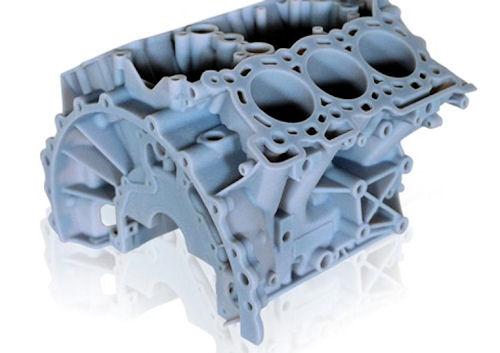Check it Out: In-House or Outsource? 6 Business Advantages of Owning a Desktop 3D Printer
Latest News
March 26, 2013
 |
Outsourcing rapid prototyping can be a lot like funding a college kid. See, my lad goes off to college. I give him an allowance. Soon, the bank texts me that his account is getting low. I beef it up. Ditto a week or two later. I look at his activity. Pizza. Every night he chows at some pizza joint. I tell him to knock it off. I’m going broke. The meal plan money was shelled out already, and, amortized across the term, it’s less than his nightly mangia fuori. That’s your connection: Over time, it can be far less expensive to bring the equipment in-house and DIY than it is to open a joint checking account with a service bureau or design consultant.
Not that I have anything against service bureaus or consultants, I hasten to add. Rather, you need to take stock of what you’re doing in holistic terms to determine whether outsourcing continues to be the right path for you. This is especially so if you dismissed the idea of in-house in the past and haven’t reviewed that call. That’s what the paper at the other end of today’s Check It Out link addresses.
Your service bureau or consultant just may have one or two Objet30 Pro 3D desktop printers from Stratasys in-house. The reason why is simple: Its specs indicate that it has the professional-level capacities needed for rapid prototyping applications like consumer electronics and medical devices, yet it’s far less expensive than a high-end unit.
Specs: 11.57- x 7.55- x 5.85-in. build size, 0.0039-in. typical accuracy, and, materials-dependent, 0.0011-in. horizontal layer thickness. It prints prototypes in seven different materials, including a high-temperature resistant material, a polypropylene like material, and a clear transparent material, all of which, Stratasys says, makes the Objet30 Pro unique in the desktop 3D printer universe.
The Objet30 Pro does cost money. Yes, that’s a capital expense you need to justify. That’s why this 8-page paper is fascinating. See, in a nutshell, it refutes the most common money objections to bringing rapid prototyping in house using survey data to buttress its assertions.
Start with time, as in savings and to market. You need about a week to get a part prototype for review from a service provider compared to, say, a day in-house. What would four “found” days mean to your development process? My guess is that you’d shave off weeks from your review to approval cycle over time. What would “found” weeks do to your time-to-market average? According to the paper nearly 33% of Objet 3D printer users have seen a 25% or more improvement in product launch times. What’s the cost benefit of that for you?
Materials for a 3D printer have a price to be sure, and you only pay a few hundred dollars for an outsourced part—a few grand if your design is pretty complex. How often do you write those checks? A DIY print is three or more times less. Almost one-third of Objet 3D printer users see at least a 25% cost saving and more than half report at least a 10% cost saving per part.
But that’s not your only cost. You use a prototyping service once maybe twice to tweak design details before you make a mold to minimize manufacturing goofs. 3D prototyping in-house means you can really optimize a design. You can print multiple design iterations, check for functionality or fit often, and, in doing so, reduce the potential for errors more than ever before.
You get the idea. You’ll have to gin up the numbers for your joint yourself. But “In-House or Outsource” can serve as a roadmap to understanding the costs benefits of rapid prototyping in-house. Click the link over there to download the white paper.
Thanks, Pal. – Lockwood
Anthony J. Lockwood
Editor at Large, Desktop Engineering
Download: In-House or Outsource? 6 Business Advantages of Owning a Desktop 3D Printer
Subscribe to our FREE magazine, FREE email newsletters or both!
Latest News
About the Author
Anthony J. Lockwood is Digital Engineering’s founding editor. He is now retired. Contact him via [email protected].
Follow DE





